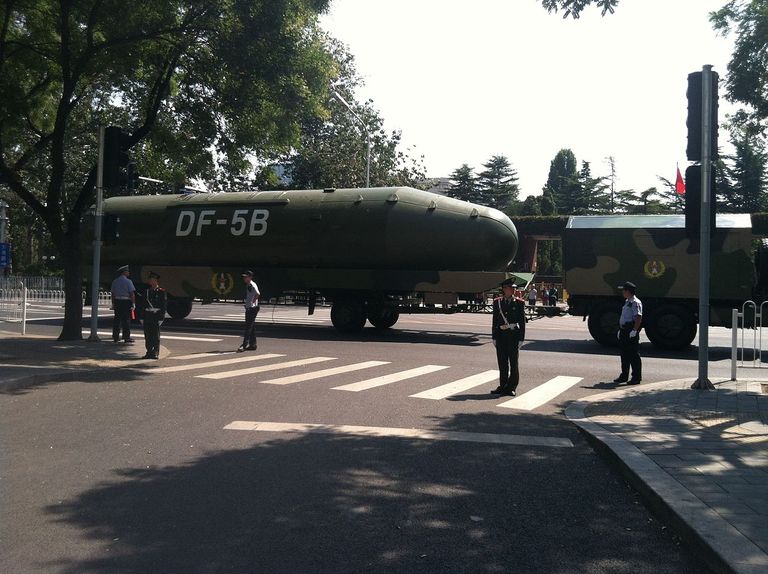The number of nuclear weapons worldwide dipped slightly in 2017, with the world’s nine nuclear powers collectively downsizing by 500 weapons.
The United States and Russia entered 2018 with fewer weapons, while China, India, and Pakistan gave their modest arsenals a slight boost. The world’s newest nuclear power, North Korea, is still a mystery with an unknown quantity of nuclear weapons.
The nonprofit Stockholm International Peace Research Institute tracks the arms trade, current conflicts, and the number of worldwide nuclear weapons through its annual yearbook. The 2018 yearbook, just released, has some interesting figures on the state of nukes.
The United States decreased its nuclear arsenal from 6,800 in 2017 to 6,450 in January 2018. That’s a decrease of 350 nukes, or about a warhead a day. Those numbers are deceiving, however, as the U.S. deployed only 1,700 warheads during this period (meaning the weapons that are loaded on submarines, intercontinental ballistic missiles, and standing by at air bases). The rest of the arsenal is in reserve or awaiting destruction. Russia also declined, but not by as much, dropping from 7,000 weapons to 6,850. Russia had 1,600 deployed nukes during the same period.
Despite increasing tensions between the two countries, both appear committed to adhering to New START. This runs counter to President Donald Trump’s expressed desire to boost the American nuclear arsenal to new post-Cold War heights, deploying ten times as many nuclear weapons as before.
China’s boost to its nuclear arsenal is the most interesting development, with Beijing adding 10 nukes between 2017 and 2018. China keeps its nuclear arsenal small, reasoning that so long as it can credibly deliver enough of a counterstrike to deter attackers, the intricacies of nuclear warfare and the extreme costs of an arms race are irrelevant. This is a policy known as “assured retaliation.
It’s unknown if China will continue to grow its nuclear arsenal. The country has a relatively small amount of fissile material, keeping its warhead numbers low. Producing more nuclear fuel would be a major undertaking on Beijing’s part. That said, China is said to be concerned about the American ballistic missile shield. Although the American defense doesn't provide much of an impediment to a Chinese nuclear strike, the Chinese are concerned it could be scaled up by the addition of more missile interceptors.
Overall, it’s a mixed picture for nuclear weapons worldwide. The good news is that the two main nuclear powers, each of which could roll back human civilization by thousands of years in a matter of hours, appear committed to existing arms control treaties. Tensions between the two countries likely mean we won’t see any new treaties any time soon though. On the other hand, the India-Pakistan arms race is a worrying development. China’s numbers remain low for a superpower, but the big question is: Will they stay low, and is there anything that can be done about it?
 The U.S. and Russia Are Shrinking Their Nuclear Arsenals—But China Isn't
The U.S. and Russia Are Shrinking Their Nuclear Arsenals—But China Isn't
No comments:
Post a Comment